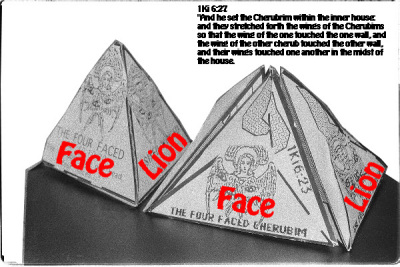This photo presentation concerns a theory.
The purpose is to propose a description of the lost device called the Urim and Thummim, mentioned explicitly in Exodus 28:30.
The theory is presented in this form in order to illustrate the basic concepts pertaining to it. Since the instrument is known to have had the ability to "divine the word of God," and that it was/is an ocular device, capable of telling the future, the theory presented here will be supported elsewhere by deliniating the practical use of this proposed replica.
By examining the various geometries shown, the repetition supports that these are intentional clues set forth for just such a means of re-discovery.
The photos scan through actual traditional Jewish artifacts, noting designs and obligatory requirements of their construction. To this, many ritualized analogies are added, most supported by commands for their performance found in the Old Testament. Long practiced ceremonies, rituals peerformed during obligatory Feast Days, forinstance, have elements that add credence to the geometry proposed.
Furthermore, using the Book of Exodus, the proposed geometric constructions of the URIM and THUMMIM are supported in symbolized analogies found in details of the Tabernacle. All these details are assumed to intentionally defined and subtly hint towards the unmentioned construction of this device.
That assumption rests on the observation that this one tool, URIM and THUMMIM, is said to be the device by which man might divine the will of God. Hence, the "hidden" geometries.
« previous
|
next »
The corner stone inside...
The tefillin of the hand, the single tetrahedronal piece, holds together, as one, all four verses from Exodus and Deuteronomy. The verses are actually written on paper in the presently used Tefillim. And, in a perfect analogy with the four part geometry of this model of the U&T, to accomodate these four slips of paper, the tefillin of the head has four separate compartments.
So, we see the analogy re-inforced. The four parts to the proposed U&T Model each contain just one verse, in accord with the Rabbis understanding. Each compartment holds one verse. But, the four-ided tetrahedron, just one piece, holds all four verses.
We shall see how this collaterates with the four faced Cherubim expressed in Ezekiel 1 and 10. And, how this collaterates with the Holy of Holies, the Most Holy Place where these two Cherubim kiss up against one another, the tetrahedron abutted against each of the four sides of the four parts of the cube.


